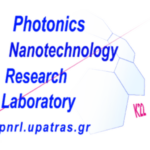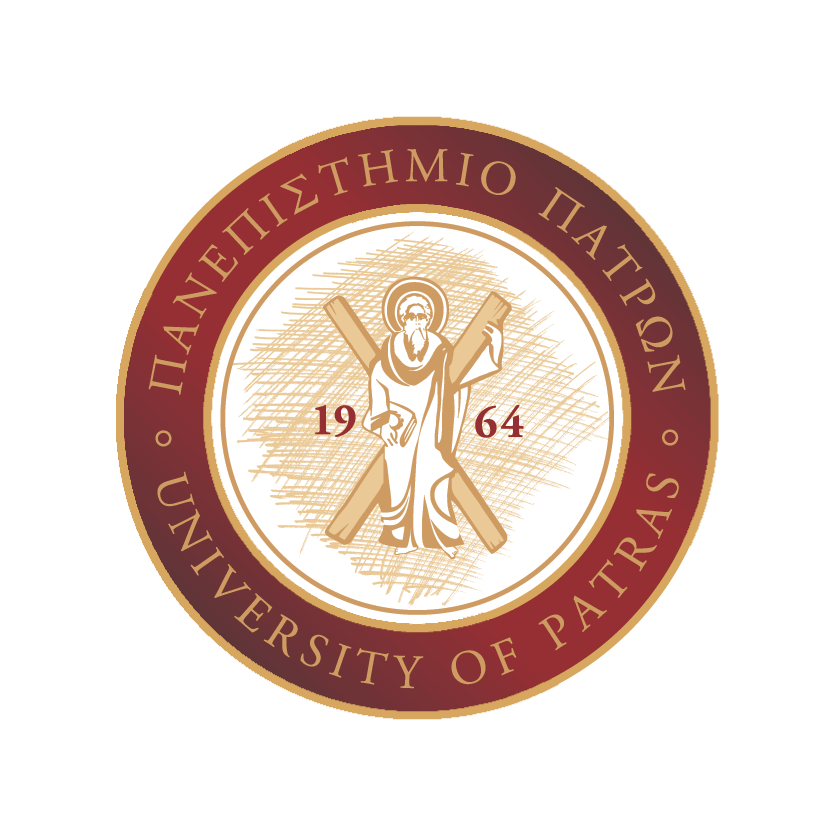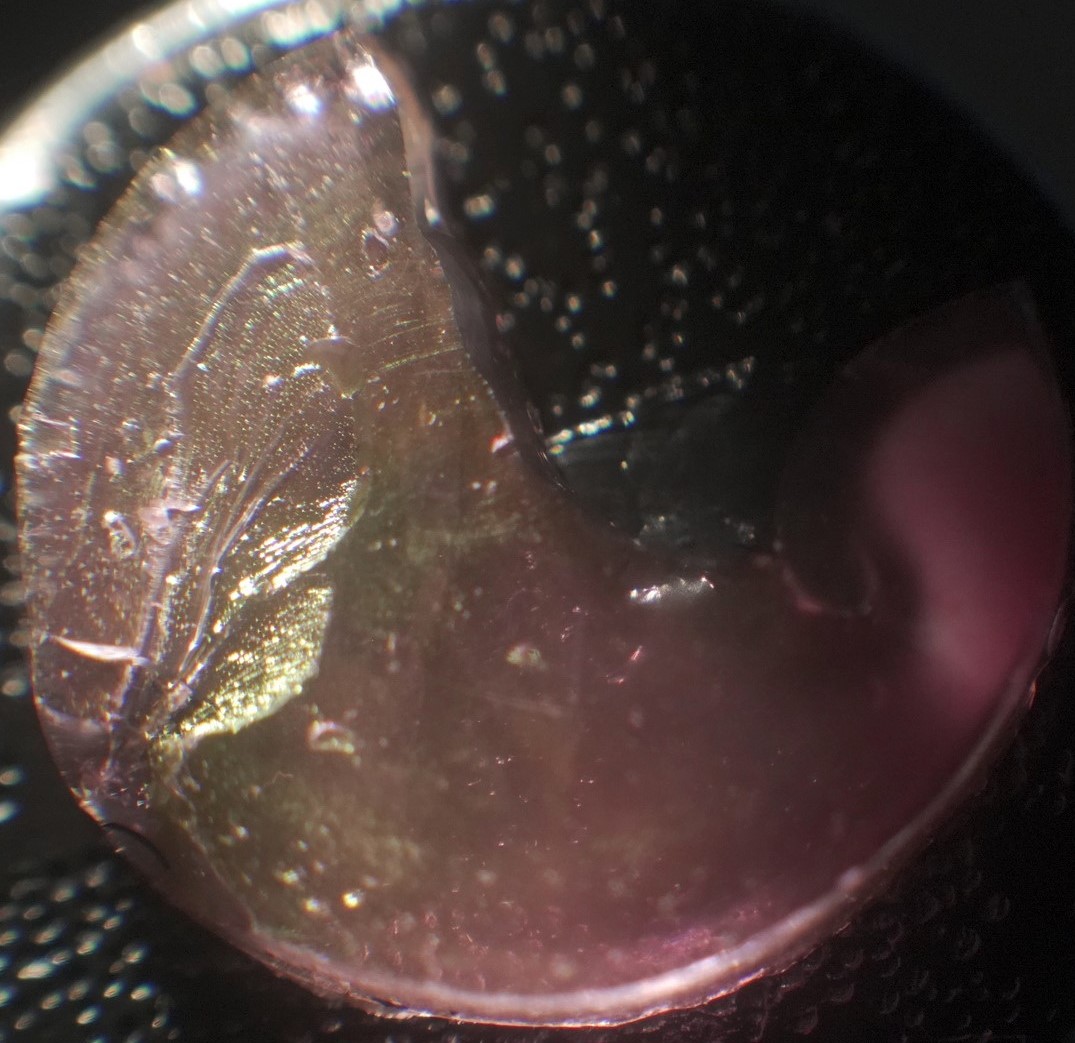Capacities & Actions
PNRL is based in the self-contained K22 building of the University of Patras Campus. It homes a photonics dedicated ISO-6 Clean Room facility in addition to chemical, optical testing, dark room and workshop facilities. Infrastructure incudes laser processing, UHV pulsed laser deposition, chemical, thermal and plasma processing, lithography/direct laser writing, soft-lithography/nanoimprinting, as well as flexible optics and photonics stations for functional testing and optoelectronic integration. The group has direct access to a full suite of materials characterization microscopy/microanalysis (SEM, TEM, AFM, STM, MFM) thermal/mechanical (DSC, TGA, DMA), spectroscopic (UV-Vis, FTIR) as well as well as central university analytical, computational and library facilities.
Expertise covers physicochemical materials synthesis, laser-based thin-film growth of inorganics and organics, emphasizing on glass, polymer and hybrid photonic nanocomposites, optical system design, electromagnetic simulation, laser-lithography & direct-writing, nanoimprinting, optics and optoelectronics integration of nanostructured photonic sensors, information processing, and radiation control.
Current research addresses the introduction and advancement of materials and technologies for:
- Photonic and plasmonic sensors for environmental and food quality monitoring.
- Ultralight aerogel elements for low-inertia optics, highly sensitive photonic and plasmonic sensors.
- Nanosystolics: A novel downsizing concept for 3D superresolution nanofabrication.
- Functional Laser-based nanolayered growth on 3D micromachines and photonics elements: A unique approach of coating complex microstructures with hybrid nanocomposites and sensitive biopolymers.
- Bio-architectural devices: Novel high performance sensors, light-managers and micro-hydrodynamics.
- Optical design, integrated interferometric, holographic, waveguide systems and laser-acoustics for metrology and sensing.
PNRL is exclusively supported by competitive national, international and private research projects.
Materials
Ultralight aerogels for photonic and plasmonic elements
Physicochemical synthesis of ultraporous silica, or other oxide, aerogels creates a solid platform for ultralight photonic components of controlled extremely low refractive index. Activities focus on optimization of in-house synthesis and high-temperature and high-pressure supercritical drying methods combined with casting in the micro and nanoscale. Alternative room temperature and ambient pressure methodologies are also mastered.
Activities focus on forming advanced photonic and plasmonic components for sensing and radiation management, as well as consecutive systolic processing yielding extreme miniaturization presented in next section.
Pulsed laser deposition for nanocomposites and biopolymers
Deep ultraviolet laser ablation offers unique advantages in stoichiometric control and spatial precision growth. The highly energetic material ejected from solid targets make possible the growth of nanolayers at room temperature and practically on any kind of substrate. In addition, thermal effects are minimized, in effect making possible the grown of artificial and natural polymeric layers, as well as their nanocomposites with inorganic and organic compounds producing minimal deterioration to the original.
The unique capability to produce congruent materials growth and to transfer the functional properties of the target source bulk to the thin film is combined here with the potential to grow nanometer thickness solid layers on miniaturized 3D objects such as micromachines and micro-optical components yielding unique prototype devices. Representative examples include the growth of high optical quality cellulose nanolayers for biocompatible photonics by use of raw-cotton targets, plasmonic films and phosphor doped nanolayers based on durable polymer blends
Nanotechnology
PNRL develops a range of alternative nanofabrication methods aiming to produce nanostructures based on novel materials for photonics and other sectors. Specific methods address 2D surface and 3D bulk processing aiming to designer free-form devices and their applications.
Laser Lithography & Direct Laser Micro/Nanoprocessing
Direct laser ablative processing offers unique advantages in direct free-form writing on surfaces and in bulk transparent solids. The use of highly energetic ultraviolet radiation minimizes the thermal affected zone and depending on the material can yield features in the sub-half micron range.
PNRL’s extensive expertise focus currently on the fabrication of diffractive optics using in house developed materials. The team applies holographic and direct-write lithography, with a scope of merging laser, materials growth and in-house alternative nanofabrication technologies.
Nanoimprinting & Nanocasting
Soft lithographic methods are well-established enabling low-cost large-area and mass-production processing. PNRL has advanced this technology beyond commercial polymer resists by using in-house synthesized hybrids thus achieving photonic nanostructures on solid surfaces. Schemes are further combined with laser and plasma processing to the ultimate systolic miniaturization.
Nanosystolics Superresolution Miniaturization
Decreasing the dimensions of an already small object is a unique concept to advance beyond the state of currently available nanofabrication means. Viscous flow sintering of aerogel master objects produces miniatured vitreous solid clones, which “magically” maintain the original stereometric form. PNRL has first introduced and continuously advances Nanosystolics: A technology currently achieving 3D-miniaturization in the sub-100nm regime, over macroscopically large surface areas and bulk volumes. Methods are combined with laser lithography and direct laser 3D microprocessing, as well as bioarchitectural mastering to produce remarkable results not available by any other means.
Applications
PNRL focuses its actions on specific applications of major interest by developing low-complexity, low- cost advanced devices using alternative materials and nanostructures developed in house. The team undertakes the optical design and optoelectronic integration of experimental and preindustrial prototypes commencing from TRL1 and advancing to TRL5 demonstration the operation.
The deployment of alternative functional materials combined with innovative nanofabrication methods allows the realization of a range of unique functionalities. Their performance is based on phenomena drawn of the nanocomposite materials nature and interactions with externally applied physical or chemical agents via the incorporated nanostructured interphases. Interferometric, diffractive and plasmonic effects offer the means for realizing a range of environmental and biological sensors, while designer interphases allow interrogation and light-management. They are combined with advanced hydrodynamic interfaces to yield novel optofluidic effects and energy efficient devices.
PNRL’s Current Research highlights include:
- Functional Laser-based nanolayered growth on 3D micromachines and photonics components is a unique approach of coating miniature structures of complex and interweaved stereometric forms. In such cases, liquid coatings are clearly inappropriate due to capillary effects, while the use of conventional sputtering methods do now enable the application of materials such as hybrid nanocomposites and sensitive transparent biopolymers for biocompatible and biodegradable photonic devices.
- Photonic and plasmonic sensors for environmental and food contamination monitoring. They are based on purely passive operations resulting from the interaction of the material with the external chemical or biological agent. Sensor response if optically monitored by remote point laser-interrogation, with no physical contact or any power supplied to the device. Plasmonic biosensors developed extend beyond the state-of-the-art by use of niche nanostructures and radiative effects in free-space or optical waveguides.
- Ultralight aerogel and xerogel nanostructures offer novel platform for sensing in ambient gaseous environment. They are taking advantage of the low refractive index and the porous nature of the solids to detect ultra-low responses.
- Novel Micro and Nano-optical elements by nanosystolic processing enable advanced the realization of nanosensing concepts at the nanoscale and the molecular range.
- Artificial designer forms and Bio-architectural nanodevices emerge in novel implementations of sensors, light-managers and hydrodynamic interfaces of extremely low drag.
- Special optical designs, laser beam delivery devicesm interferometers and waveguides are implemented together with respective methodological protocols for industrial environmental and medical applications.
© 2022 All Rights Reserved.


